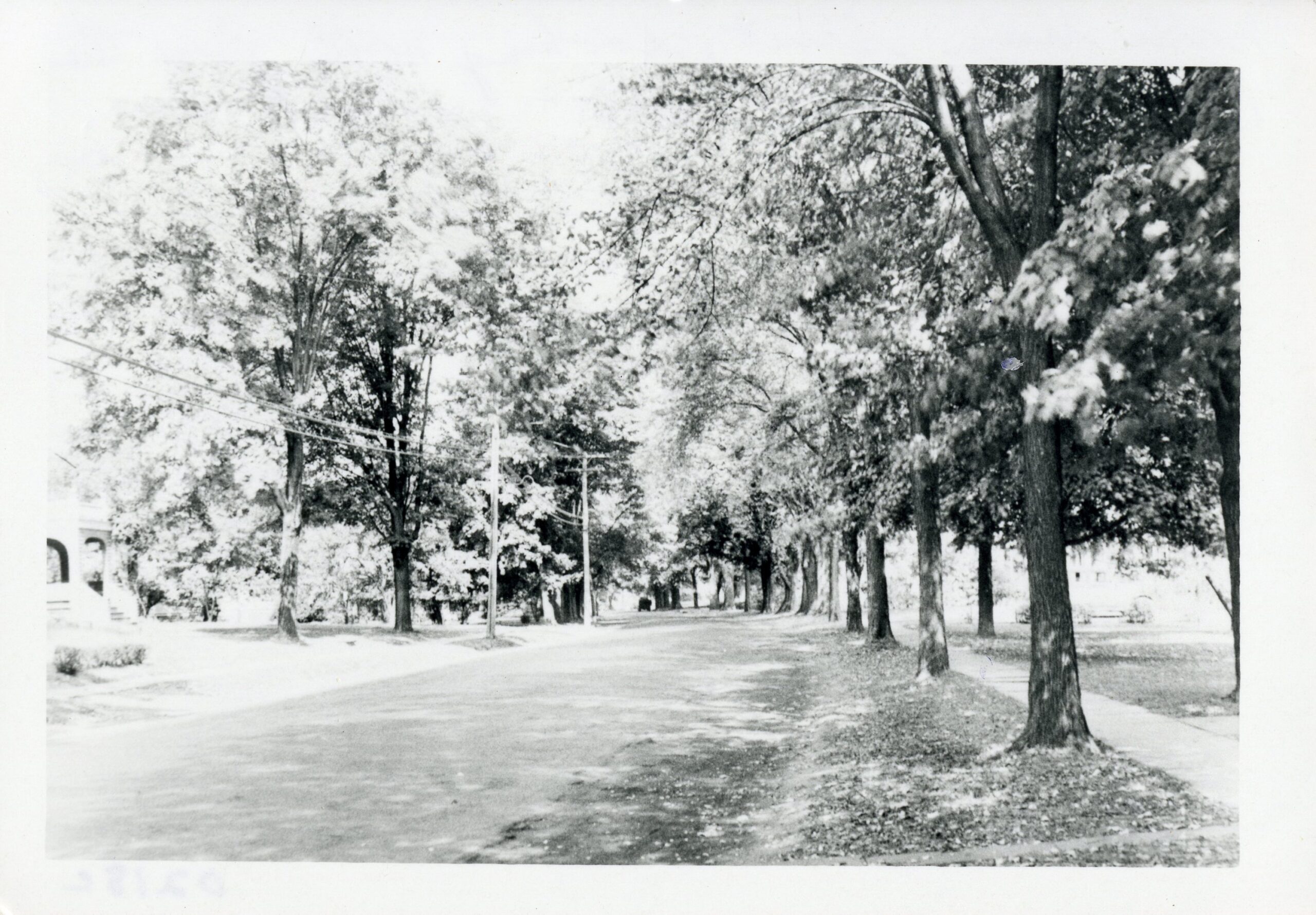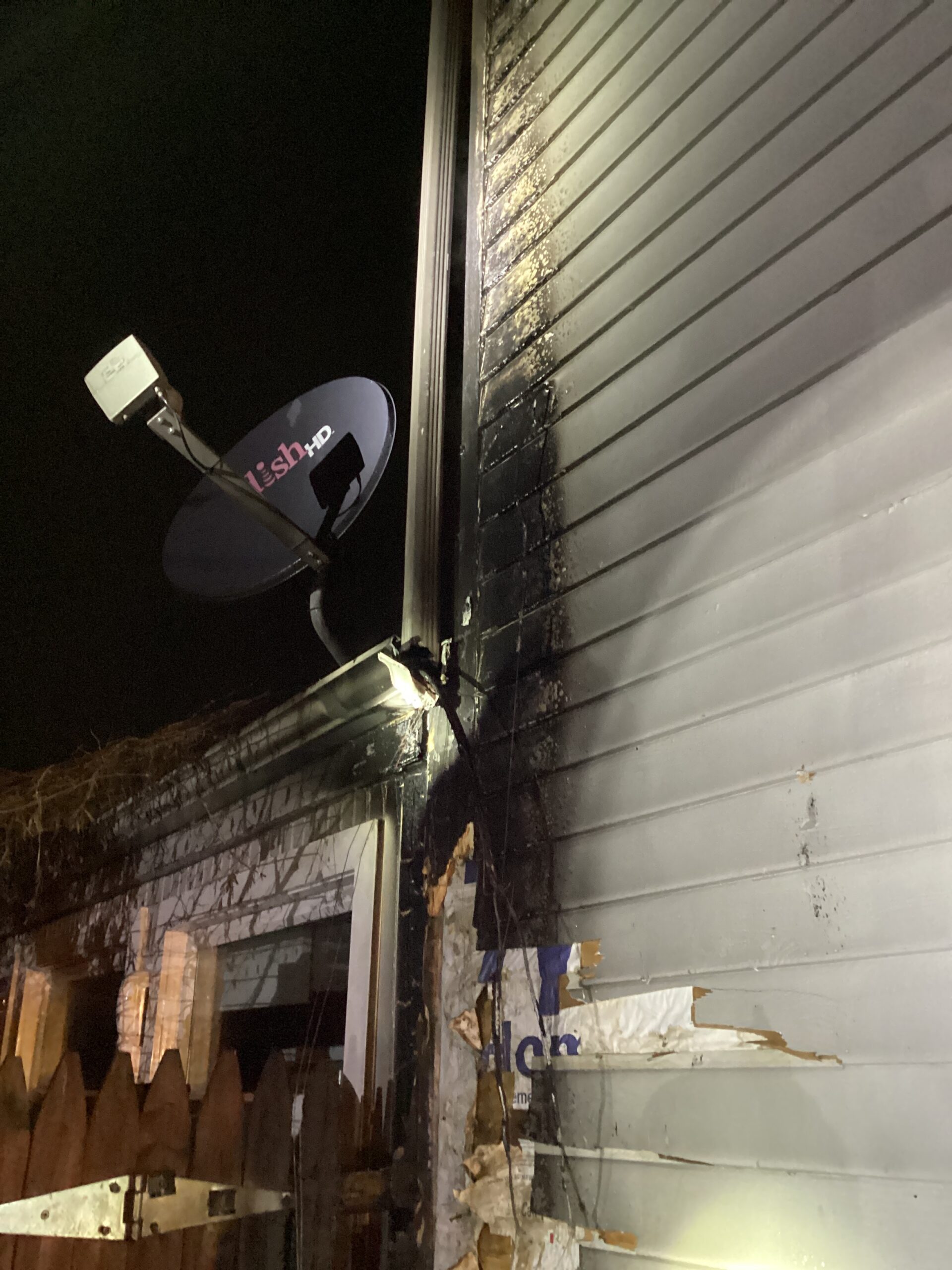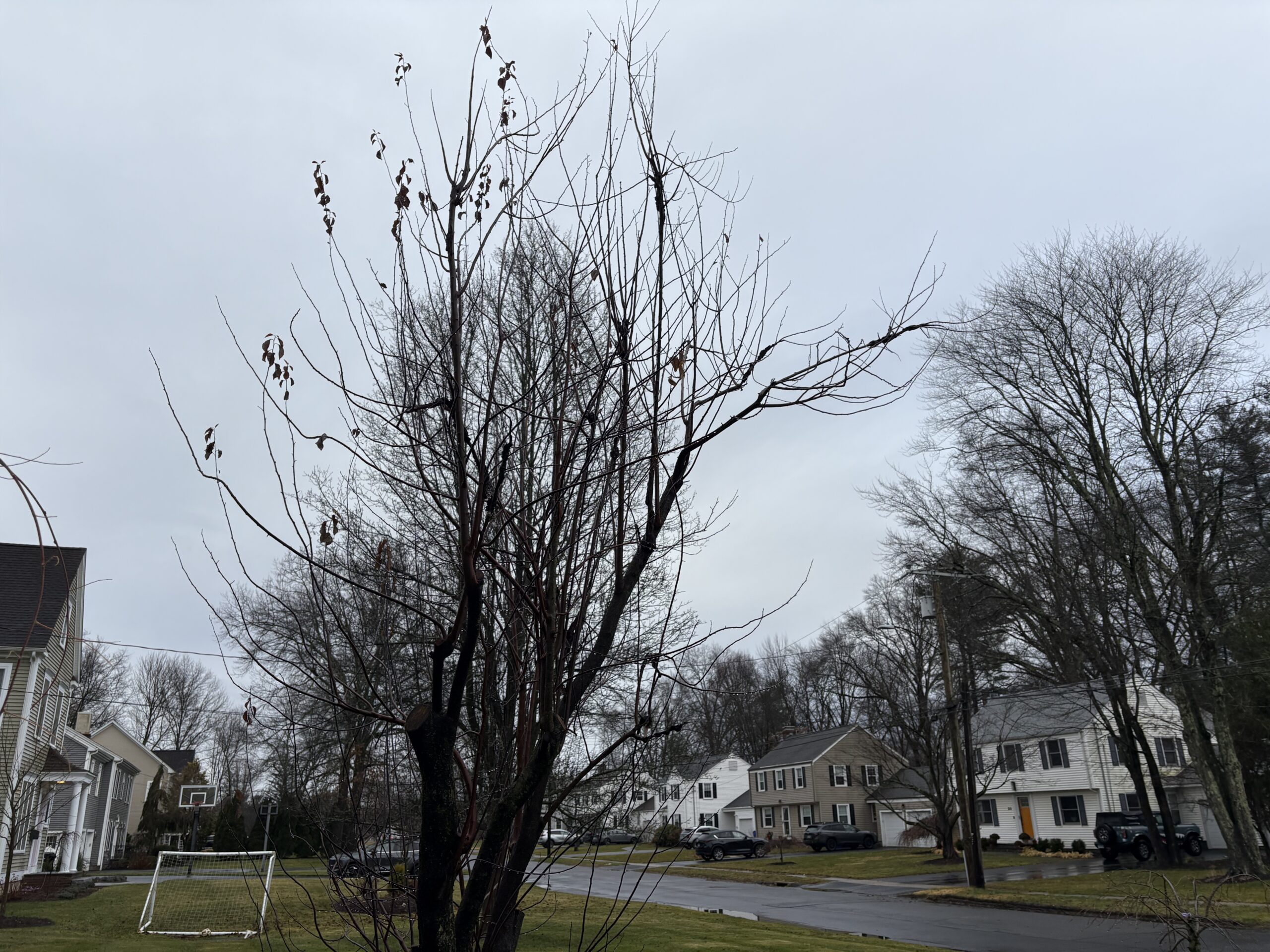From the West Hartford Archives: North Main Street Near Brace Road

Audio By Carbonatix

North Main Street looking north from the Center around the late 1920s to early 1930s. Photo courtesy of Noah Webster House & West Hartford Historical Society
Historian Jeff Murray takes a look into West Hartford’s past to uncover some surprising information, stir up some memories, or reflect on how much life has changed – or hasn’t changed at all. Enjoy this week’s ‘From West Hartford’s Archives’ …
By Jeff Murray
This is a view of North Main Street looking north from the Center around the late 1920s to early 1930s.
The east side of the road was mainly owned by the Whitman family for generations, surrounding the ancient cemetery grounds, while the west side was Goodman land, until it became the property of the Brace and Keeney families. Before the extensive development of West Hartford Center, Main Street served as the dividing line.
By 1900, the east side of North Main Street was occupied by different members of the Whitman family. Samuel Whitman (1823-1908) owned the land from the intersection of Whitman Avenue down to Brace Road. He served as the first Treasurer of West Hartford when the town became independent from Hartford in 1854, working in this role on and off until his retirement in 1890, at which point his son Henry was elected. In 1894, Henry was elected to the position of Town Clerk and served until his resignation in January 1929.
Samuel oversaw the appropriations for the first real improvements in West Hartford’s roads (perhaps it was borrowing so much money for this feat that made him finally retire!). To the north of his holdings along North Main Street, almost to Fern Street, was the land of his sister, Charlotte Whitman. Born in the old Whitman homestead on this stretch, Charlotte married Levi Flagg in 1845 and had six children. After her husband’s death in 1884, she retained the family land as a widow surrounding the North Cemetery while living in New York. A year before her death, she sold the entire estate.
Starting in the 1890s, little by little, the Whitmans began selling off single lots for new homes. Elizur Keeney built a house in 1897 at 28 North Main Street (which has since been replaced – by an office building in the 1970s). Keeney lived there for just over a decade and then sold it to the Strong family, who occupied it for decades.
Henry A. B. Day built a house at 24 North Main Street for his brother-in-law Charles Wyckoff in 1910. Henry’s sister Louise Day (who married Ward Duffy) would come to own it in the 1920s. The Crittenden family built a large estate just north of the old cemetery, chipping away at the Whitman lands with each purchase.
By 1917, the widow of Samuel Whitman still owned the majority of the land on the east side of the road extending back to Trout Brook, but the lots fronting on the road itself were occupied by several new houses. Not a single one of these houses has survived since then – they have all been replaced by office buildings or condos on Loomis Drive. The development of this side of the street was slow and took more than a generation; at the time of this photograph, it may have looked unrecognizable to someone in 1880, but it was also unrecognizable to those in 1980.
The west side of the street saw much denser and rapid development. While the Brace family owned everything along what is now Brace Road back to Pleasant Street on the west, a housing tract was started in 1901 by Frank Benedict from Fern Street down to Whitman Avenue. Originally the land of Charles Pond (the same Charles Pond whose wife was the namesake of Elizabeth Park), a significant portion of the farm was used throughout the decade as athletic fields for the Young Men’s Club.
Pond opened Whitman Avenue in 1894 to connect to the new Fairview Cemetery, which the town had purchased from him to accommodate rising demand for gravesites. Pond also had sold more lots along North Main Street for new houses, including for Amelia Humphrey and Elizabeth Elmer (the town librarian). In the late 1890s, John D. Browne bought up more than 80 acres between North Main Street and Fairview Cemetery from both the Pond and Keeney estates.
By 1901, he sold it for a profit to Frank Benedict, who laid out a grid of streets in a new tract called West Hartford Heights – these original streets included Whitman Avenue and Keeney Avenue running west, and then Sylvan Avenue, Geneva Avenue (now Arundel), Brunswick Avenue, Clifton Avenue, Hillside Avenue (now Walden Street), and Argyle Avenue.
Hundreds of lots were sold off over the course of a decade, but speculation was the biggest driver. There was no building on this land until at least 1914, more than a decade after it was started. Lot owners were able to build up a significant amount of equity in these lots, especially during the early 1900s when demand for land increased. New people were moving to West Hartford every month with the introduction of the electric trolley and infrastructure, like paving, fire hydrants, and the incoming sewer system in the Center district.
All of this meant that the old family farms were giving way to the modern houses and suburban tracts of the era, just at different speeds. In the 1920s, the West Hartford Heights tract would be combined with the Westlawn tract along Brace Road to bring houses right up to Farmington Avenue, just in time for the Central Theater and other commercial buildings to be constructed. Unlike the houses on the east side that no longer stand, the west side of North Main Street still presents all of the houses from the 1890s, except for one or two. The area around Whitman Avenue is quite old compared to the houses across the street, which is a bit ironic. The developments that churned through the Brace, Keeney, and Pond estates still remain, but the careful carving out of houses on the Whitman land – one by one – was gone within a generation.

North Main Street, looking north toward Brace Road. Google Street view
Jeff Murray was born and raised in West Hartford and has been involved with the Noah Webster House & West Hartford Historical Society since 2011 when he was a high school student and won the Meyer Prize for his essay on local history. Jeff routinely volunteers as local history researcher uncovering information for numerous museum programs such as the West Hartford House Tour and West Hartford Hauntings. Jeff works as a data analyst at Pratt & Whitney.
Like what you see here? Click here to subscribe to We-Ha’s newsletter so you’ll always be in the know about what’s happening in West Hartford! Click the blue button below to become a supporter of We-Ha.com and our efforts to continue producing quality journalism.



